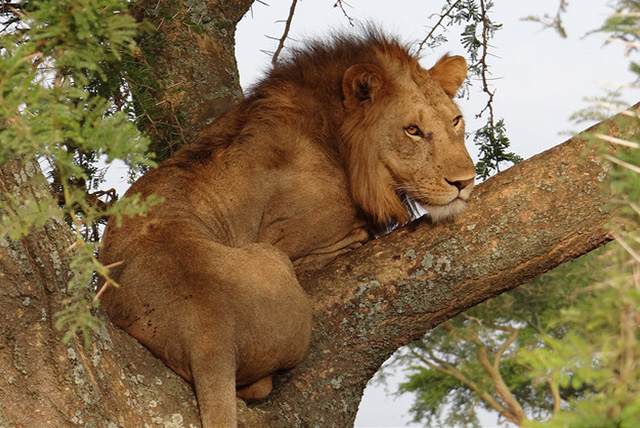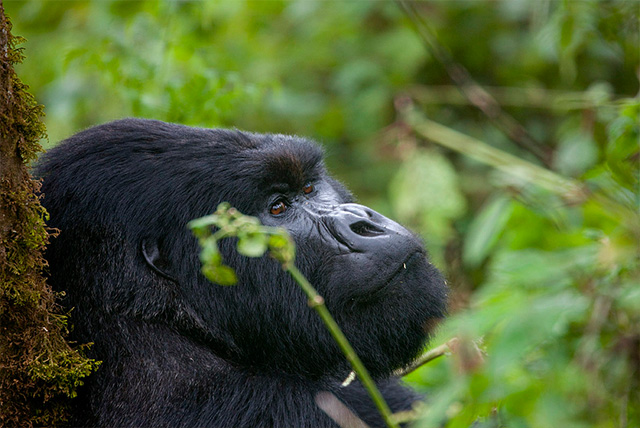The climate and weather of Rwanda
The unique blend of elevation and closeness to the equator gives Rwanda a delightful tropical highland climate, ensuring a warm and inviting atmosphere all year round. The vast expanse of the country rests upon a plateau, soaring to an impressive elevation of around 1500 m / 5000 ft above sea level. In the westernmost region along the Rusizi River, where the border meets the Democratic Republic of the Congo, the altitude dips below a thousand meters / 3300 feet, and temperatures can sometimes soar to 35 °C / 95 °F.
Rainfall varies between 1,000 and 1,400 mm / 40 to 55 inches each year, depending on the region. From June to August, the landscape experiences a dry spell, with July standing out as the driest month. The rainy season stretches from September to May. The rainy season unfolds in two captivating chapters: from March to May and from September to November. Although the decrease in rainfall from December to February is somewhat subtle, it becomes more pronounced in the northern regions, where it dips below 100 mm / 4 inches per month. The months of March through May bring a surge of rainfall, with April and May frequently experiencing more than 150 mm / 6 inches of precipitation each month.
RWANDA NATIONAL PARKS
Rwanda boasts a pleasant and temperate climate throughout the year, attributed to its impressive elevation. Despite its proximity to the equator, the country’s elevation offers a refreshingly cool atmosphere, with delightful variations influenced by altitude, season, and region. Here’s an overview of Rwanda’s climate and weather patterns:
1. Overall Climate Exploration
Equatorial and Highland: Rwanda boasts a tropical highland climate, offering a delightful range of moderate temperatures all year round. The temperatures typically vary between 16°C and 26°C (60°F to 79°F), with a refreshing chill found at elevated heights.
Rwanda showcases a captivating rhythm of distinct wet and dry seasons, with two main wet periods and two dry intervals that shape its vibrant landscape. However, rainfall can surprise you at any moment because of its equatorial location.
2. The Vibrant Seasons of Rwanda
Extended Dry Season (June to September)
The weather is invitingly warm, basking in sunshine and dry conditions, with a refreshing drop in humidity.
Ideal for: Exploring the wonders of gorilla trekking, hiking through scenic landscapes, and embarking on thrilling wildlife safaris, where trails are more accessible and animals congregate around water sources.
Temperatures: Vary between 20°C and 27°C (68°F to 81°F) throughout the day. The air is crisp during the nights and mornings, particularly in the mountains.
Brief Rainy Period (October to November)
Weather: Expect some delightful rain, often accompanied by refreshing showers in the afternoons or evenings. The rain does not fall all the time, leaving room for bright, sunny moments.
Ideal for observing birds and capturing stunning photographs, as the scenery transforms into a vibrant, green paradise. Additionally, gorilla trekking continues to be within reach.
Daytime temperatures range from 20°C to 26°C (68°F to 79°F).
Brief Dry Season (December to February)
Weather: A brief dry spell with reduced rainfall, though sporadic showers might still make an appearance.
Ideal for: Encountering gorillas, with well-maintained trails and pleasant weather conditions. The brief dry season draws many to the shores of Lake Kivu.
Daytime temperatures vary between 20°C and 27°C (68°F to 81°F).
Extended Rainy Period (March to May)
Weather: The most intense downpours of the year, creating muddy paths and limited sightlines through dense foliage.
Ideal for those seeking affordable travel and bird enthusiasts, this season presents vibrant landscapes, a tranquil atmosphere with fewer crowds, and great deals on lodging and excursions.
Temperatures: A refreshing change with cloud cover, bringing daytime temperatures ranging from 18°C to 25°C (64°F to 77°F).
3. Diverse Climate Landscapes
Kigali and Surrounding Areas: Nestled at an elevation of 1,567 meters (5,141 feet) above sea level, Kigali boasts a pleasant climate, with daytime temperatures typically ranging from 22°C to 26°C (72°F to 79°F).
Volcanoes National Park: In the north, where heights soar above 2,000 meters (6,500 feet), the air turns crisp, particularly as night falls. This region is alive with unexpected showers, even when the skies are typically clear.
Nyungwe Forest and Southern Highlands: Nyungwe Forest in the south is a captivating high-altitude region characterized by a cooler, misty climate and frequent rain showers. This region in Rwanda is characterized by its frequent rainfall, accompanied by high humidity and temperatures that fluctuate between 10°C and 20°C (50°F to 68°F).
Akagera National Park and Eastern Lowlands: The eastern plains offer a warmer and drier climate compared to the rest of the country, with daytime temperatures typically ranging from 25°C to 30°C (77°F to 86°F), particularly during the dry season.
4. Tips for Weather and Travel
Layer Up: With ever-changing temperatures and the possibility of rain even during typically dry periods, layering your clothing is the best approach. Opt for lightweight, moisture-wicking clothing paired with a warm layer for those exhilarating high-altitude experiences.
Rain Gear: Pack a lightweight rain jacket or poncho, as unexpected showers can pop up at any moment.
Hiking Gear: When exploring mountainous terrains, reliable, waterproof hiking boots are essential, especially during the rainy seasons when paths may become muddy.
Sun Protection: The elevated terrain brings with it heightened sun exposure, so be sure to pack sunscreen, sunglasses, and a hat, even when the skies are cloudy.
Rwanda’s year-round temperate climate creates the perfect backdrop for exploration, with its seasonal changes bringing distinctive elements to every adventure.








